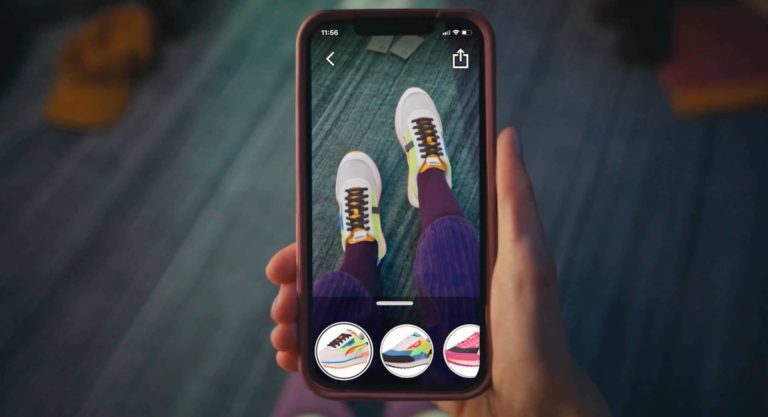
There’s a common rallying cry among AR proponents that the technology will transform the way people shop. But what are the proof points? Does AR shopping resonate with consumers today? Equally important, are consumer-facing brands meeting that demand?
Speaking first to the demand side, consumer research generally paints a positive picture in terms of AR’s user adoption and aspirational use. Generally is the key term: Survey data from our research arm ARtillery Intelligence signals good and bad news for consumer AR traction.
As for adoption accelerants on the supply side, there are several indications of AR’s ability to boost eCommerce conversions – presenting a fairly clear-cut business case for brand adoption. AR can also reduce product returns, which are a $550 billion annual headache.
Meanwhile, another data set recently hit our desks from Snap and Ipsos. Consisting of both consumer and brand sentiments, the report exposes opportunities for brands to better meet consumer AR demand. This is what we’re calling the AR marketing’s supply/demand gap.
Data Dive
Before diving into the findings, what was the methodology? Ipsos surveyed 20,279 consumers, including smartphone users aged 13-44 who use social communication apps. It also surveyed 1021 brand executives who have implemented AR or are open to doing so.
As for the report’s highlights, the following experiences were evaluated for their AR interest by consumers (consumption) and brands (delivery). AR’s role varies in each case but often involves graphical adornments, informational overlays, or other immersive elements.
Immersive learning
Consumer interest: 84 percent
Brand Interest: 27 percent
Mapping & Navigation
Consumer interest: 83 percent
Brand Interest: 27 percent
Shopping (e.g., scanning product info for informational overlays)
Consumer interest: 82 percent
Brand Interest: 60 percent
Travel and Exploration
Consumer interest: 80 percent
Brand Interest: 29 percent
Entertainment Events (e.g., concerts & sports)
Consumer interest: 79 percent
Brand Interest: 39 percent
Business Events (e.g., conferences)
Consumer interest: 75 percent
Brand Interest: 27 percent
Product Instructions (e.g., assembly)
Consumer interest: 73 percent
Brand Interest: 43 percent
AR is primarily for fun
Consumers agree: 57 percent
Brands agree: 90 percent

Inherently Monetizable
Synthesizing these results, a few things jump out. First, like other studies we’ve examined on consumer AR sentiment, there’s a clear consumer affinity for AR. This includes shopping and evaluating products prior to purchase, meaning AR has inherently monetizable qualities.
But that demand isn’t met by supply in the aggregate. Again, supply here refers to brands that offer AR shopping features. This imbalance is shown by the fact that only 60 percent of brands are interested in offering AR shopping, versus 82 percent of consumers who are asking for it.
This all points to the opportunity to close AR’s supply/demand gap. Brands that do so can gain an early mover advantage in immersive shopping. That can mean a competitive edge over less-adoptive competitors, as well as gaining early competency in AR marketing best practices.
All of this is amplified in social media. Not only is it a natural place to integrate AR, per Snap’s continued efforts, but it can propel AR-based content. That happens as distribution is fueled by shareability and social-graph virality. Social apps also have built-in audiences.
But a greater adoption accelerant may be when AR reaches a point when it’s expected by consumers – a key turning point in any technology that compels brand adoption as a competitive necessity. That could close the supply gap, as fear of lost sales is a powerful motivator.






